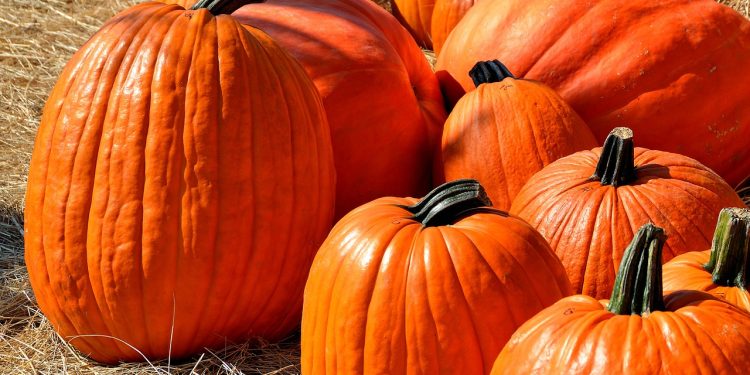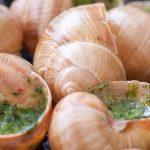
National Pumpkin Day
National Pumpkin Day is a non-official holiday that falls on October 26th and is celebrated annually. The purpose of this holiday is to celebrate and give thanks to the squash cultivator that is such an integral part of American culture.
The pumpkin is not only delicious but also one of the main symbols of Halloween in the U.S. and is a central element in many fall festivals, events, and contests. A popular event featuring the humble pumpkin is “Pumpkin Chunkin.”
This event involves teams building many different mechanical devices to throw a pumpkin as far as possible. Some devices constructed for Pumpkin Chunkin Competitions include air cannons, trebuchets, catapults, and ballistas. With their popularity increasing each year, it really shouldn’t be a surprise that this orange squash has its holiday.
History of the Pumpkin
Scientists believe that pumpkins originated in North America about 9,000 years ago. This is based on them finding seeds that date back to Mexico in 7,000 B.C. However, the name of this squash comes from the Greek word “pepõn” – a word that means “large melon.”
This word transformed as it eventually became a French word, then an English word, and finally into the American-English word “pumpkin.” Native Americans used to grow this squash alongside river banks with beans and sunflowers before maize was developed as a crop. After maize became a crop, the Native Americans used a system of growing pumpkins with maize and beans called the “Three Sisters Method.”
The Three Sisters method allows pumpkins, corn, and beans to all help each other while they grow. Corn serves as the trellis upon which the beans can climb and get sunlight. The beans put nitrogen into the soil, which allows the corn to grow tall. The bean vines also keep the corn stalks stable on extremely windy days.
Pumpkins and other squash are used to shelter the shallow roots of the corn, shade the ground, and prevent weeds from taking hold. This allowed all three crops to benefit each other as they grew. To the Native Americans, pumpkins and other forms of squash were an important food staple and helped them survive the long winters.
It is believed that Christopher Columbus brought pumpkin seeds back to Europe after he visited the continent. The Spanish also took pumpkin seeds back to Europe during the 15th and 16th centuries. When the Pilgrims came to North America, the Native Americans introduced them to pumpkins, and many scholars believe that pumpkins were served on the second Thanksgiving in 1623.
How Pumpkins Became Popularized as Jack O’ Lanterns
Today, the pumpkin is associated with October in general and Halloween specifically. That’s probably because it was around Halloween that Irish and Scottish immigrants to the United States began carving pumpkins and referring to them as “Jack-O’-Lanterns.”
They did this because of an Irish myth about a man named Stingy Jack. In this story, Stingy Jack invited the Devil to drink with him but didn’t want to pay for his drink. So he asked the Devil to turn into a coin that he could use to pay for the drinks.
Once the Devil changed into the coin, however, Stingy Jack decided to not pay for the drinks. Instead, he placed the coin into his pocket next to a silver cross. The silver cross prevented the Devil from changing back to his original form, and Jack thought of a way he could benefit from this situation. He eventually came up with an idea that he thought was pretty clever.
Stingy Jack told the Devil that he would let him change back if the Devil would not claim his soul after he died or bother him for a full year. The Devil agreed, and Jack set him free. The following year, Stingy Jack once again managed to trick the Devil by having him climb a tree to pick a piece of fruit and then carving a cross underneath him so he couldn’t come down. Jack then made the Devil promise that he wouldn’t bother him for another ten years.
Unfortunately for Jack, right after he tricked the Devil for the second time, he fell ill and died. Jack then attempted to get into heaven but was refused by God because of his misdeeds, so he tried to get into hell. Once he got to the gates of hell, however, the Devil refused him entrance because he had promised Jack he wouldn’t claim his soul.
But the Devil did give Jack a burning ember from hell so Jack could light his way as he walked the Earth in limbo. Jack carved out a potato (or a turnip in some iterations of the story) and placed the burning coal into it to light his path.
He was then known as Jack of the Lantern – a term changed to “Jack O’ Lantern” – and forced to walk the Earth on Halloween. Since pumpkins were so readily available around Halloween, Jack O’ Lanterns eventually stopped being created from potatoes and turnips and instead started getting created from pumpkins.
Facts About Pumpkins
- The largest pumpkin weighed 1,140 pounds.
- The largest pumpkin pie was 5 feet in diameter and weighed 350 pounds.
- The largest pumpkin pie used 80 pounds of cooked pumpkin, 12 dozen eggs, and 36 pounds of sugar.
- The largest pumpkin pie took 6 hours to bake.
- Pumpkins contain Vitamin A and potassium.
- Pumpkins are 90% water.
Celebrating National Pumpkin Day
National Pumpkin Day can be celebrated in a number of different ways. You can carve your pumpkin for Halloween, serve pumpkin pie, or participate in one of the pumpkin chunking competitions. You can then take pictures of all your festivities and post them on social media using the hashtag #NationalPumpkinDay.








